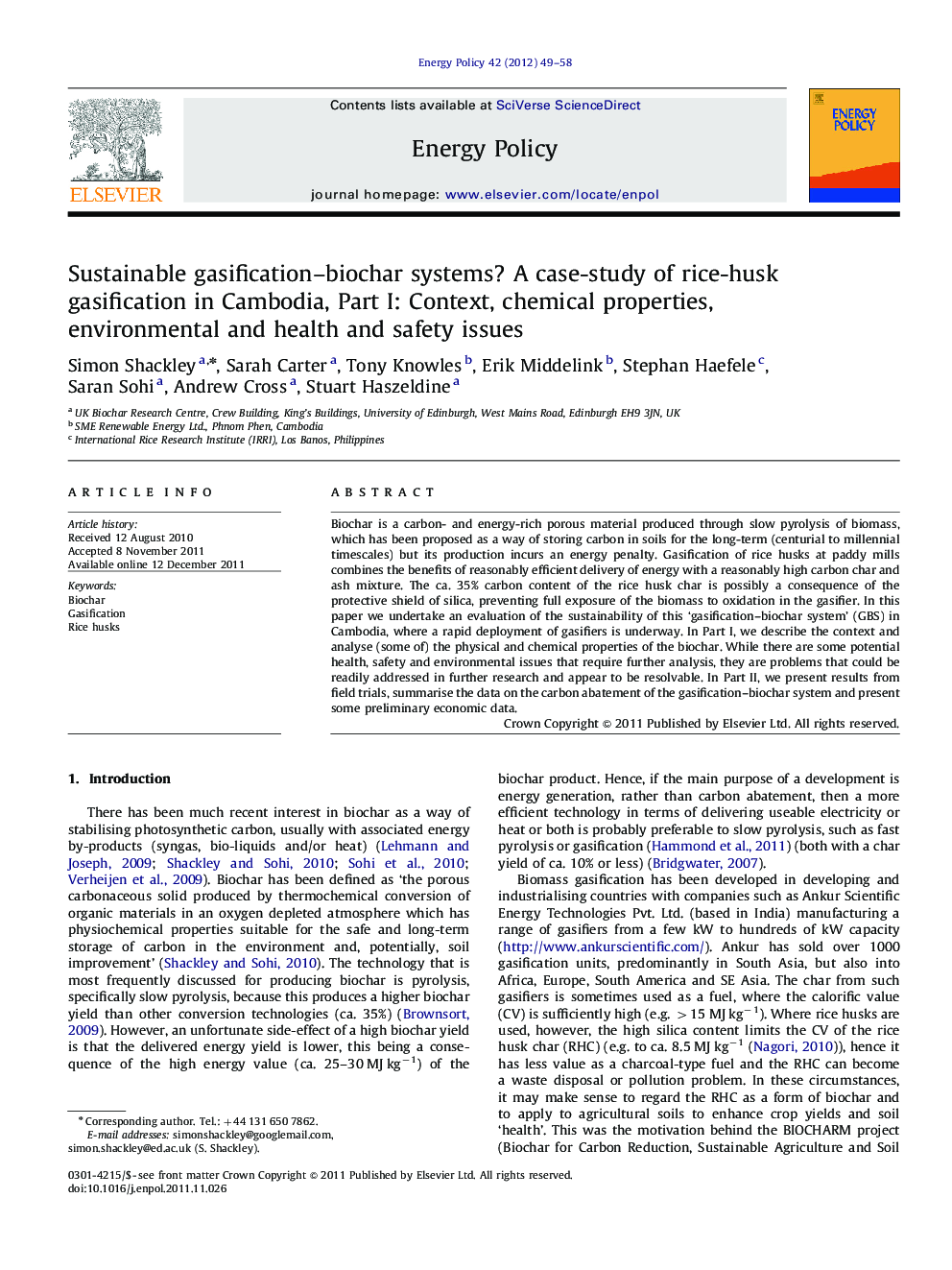| کد مقاله | کد نشریه | سال انتشار | مقاله انگلیسی | نسخه تمام متن |
|---|---|---|---|---|
| 995745 | 1481316 | 2012 | 10 صفحه PDF | دانلود رایگان |

Biochar is a carbon- and energy-rich porous material produced through slow pyrolysis of biomass, which has been proposed as a way of storing carbon in soils for the long-term (centurial to millennial timescales) but its production incurs an energy penalty. Gasification of rice husks at paddy mills combines the benefits of reasonably efficient delivery of energy with a reasonably high carbon char and ash mixture. The ca. 35% carbon content of the rice husk char is possibly a consequence of the protective shield of silica, preventing full exposure of the biomass to oxidation in the gasifier. In this paper we undertake an evaluation of the sustainability of this ‘gasification–biochar system’ (GBS) in Cambodia, where a rapid deployment of gasifiers is underway. In Part I, we describe the context and analyse (some of) the physical and chemical properties of the biochar. While there are some potential health, safety and environmental issues that require further analysis, they are problems that could be readily addressed in further research and appear to be resolvable. In Part II, we present results from field trials, summarise the data on the carbon abatement of the gasification–biochar system and present some preliminary economic data.
▶ Rice husk char (RHC) is a biochar produced from gasification of rice husk for power production. ▶ RHC contains ca. 33% stable carbon and overall conservation of carbon in feedstock of ca. 32%. ▶ Gasification combines benefits of renewable energy generation and carbon abatement via biochar. ▶ Pollution and contamination from adding RHC to agricultural soils can be avoided. ▶ Avoiding contamination requires dry discharge or careful separation of RHC from waste water.
Journal: Energy Policy - Volume 42, March 2012, Pages 49–58